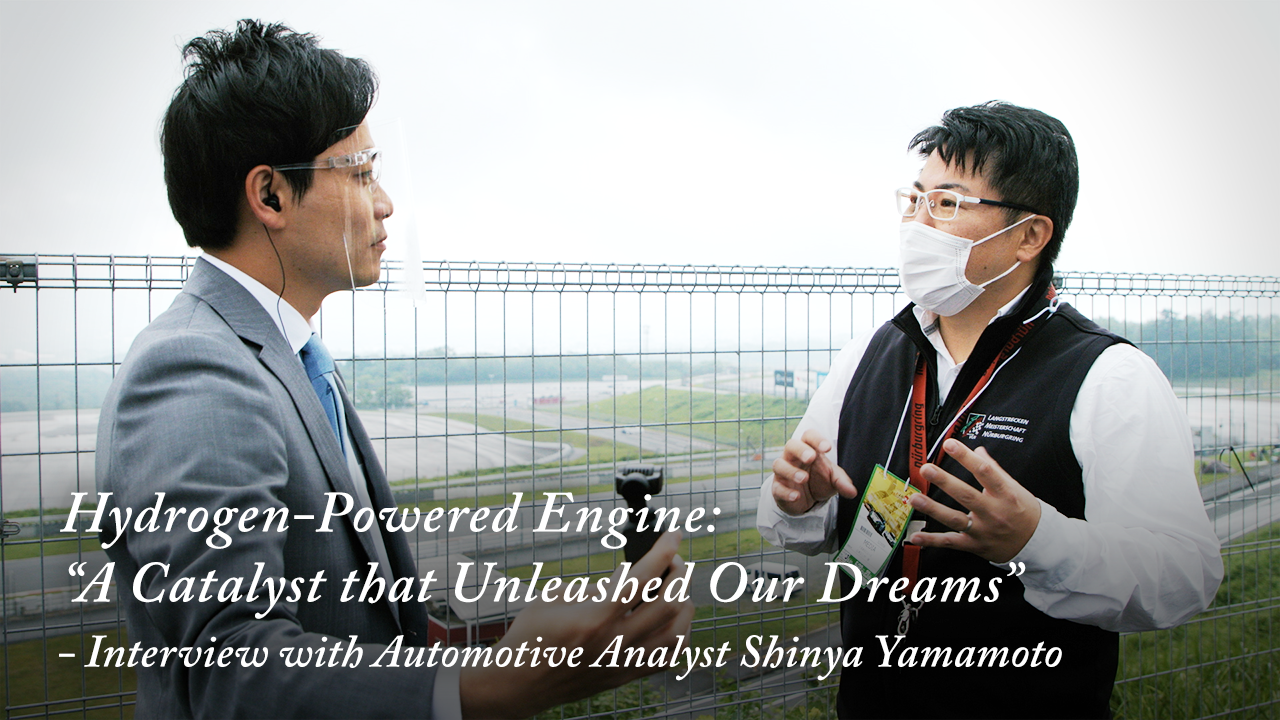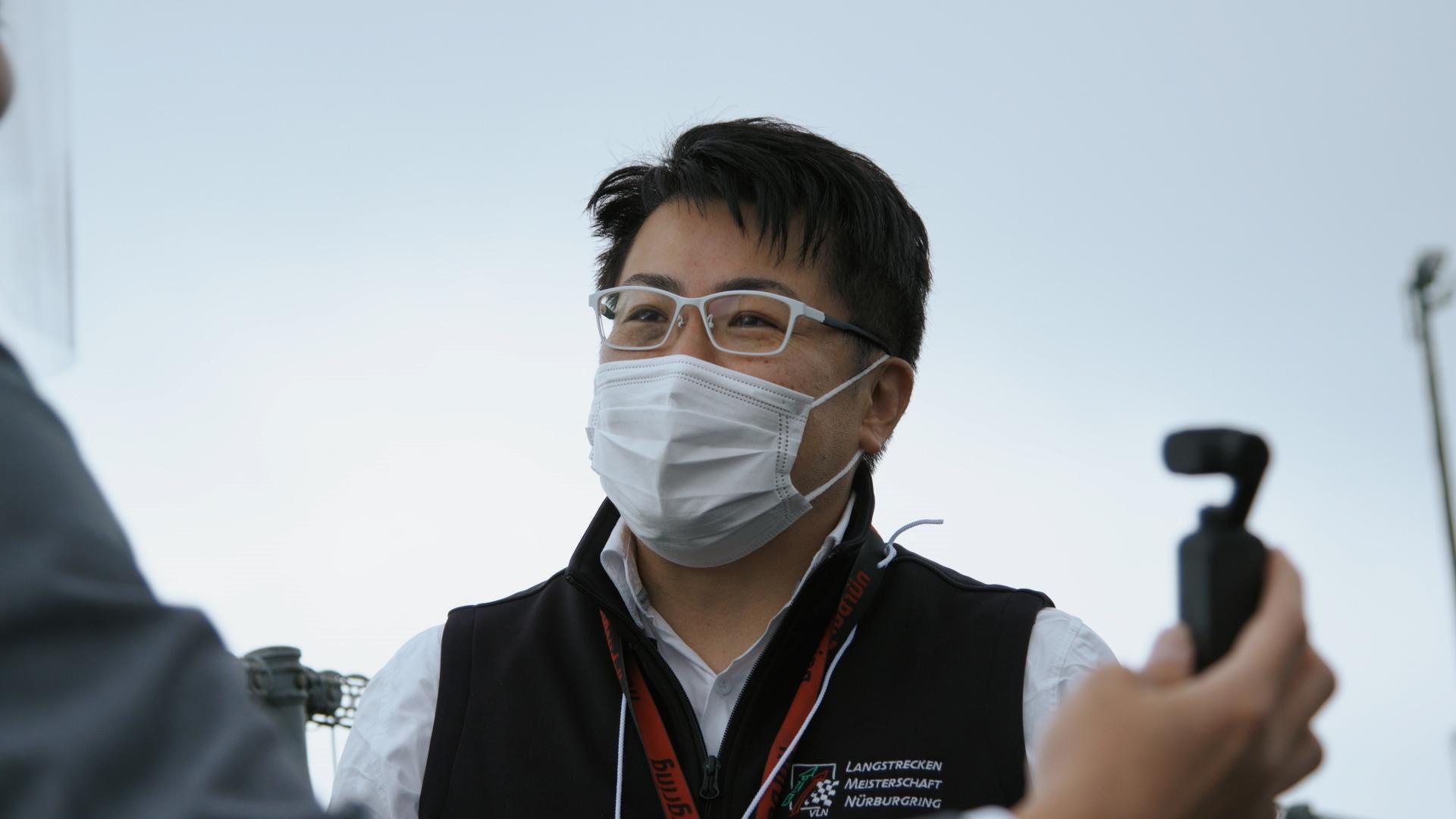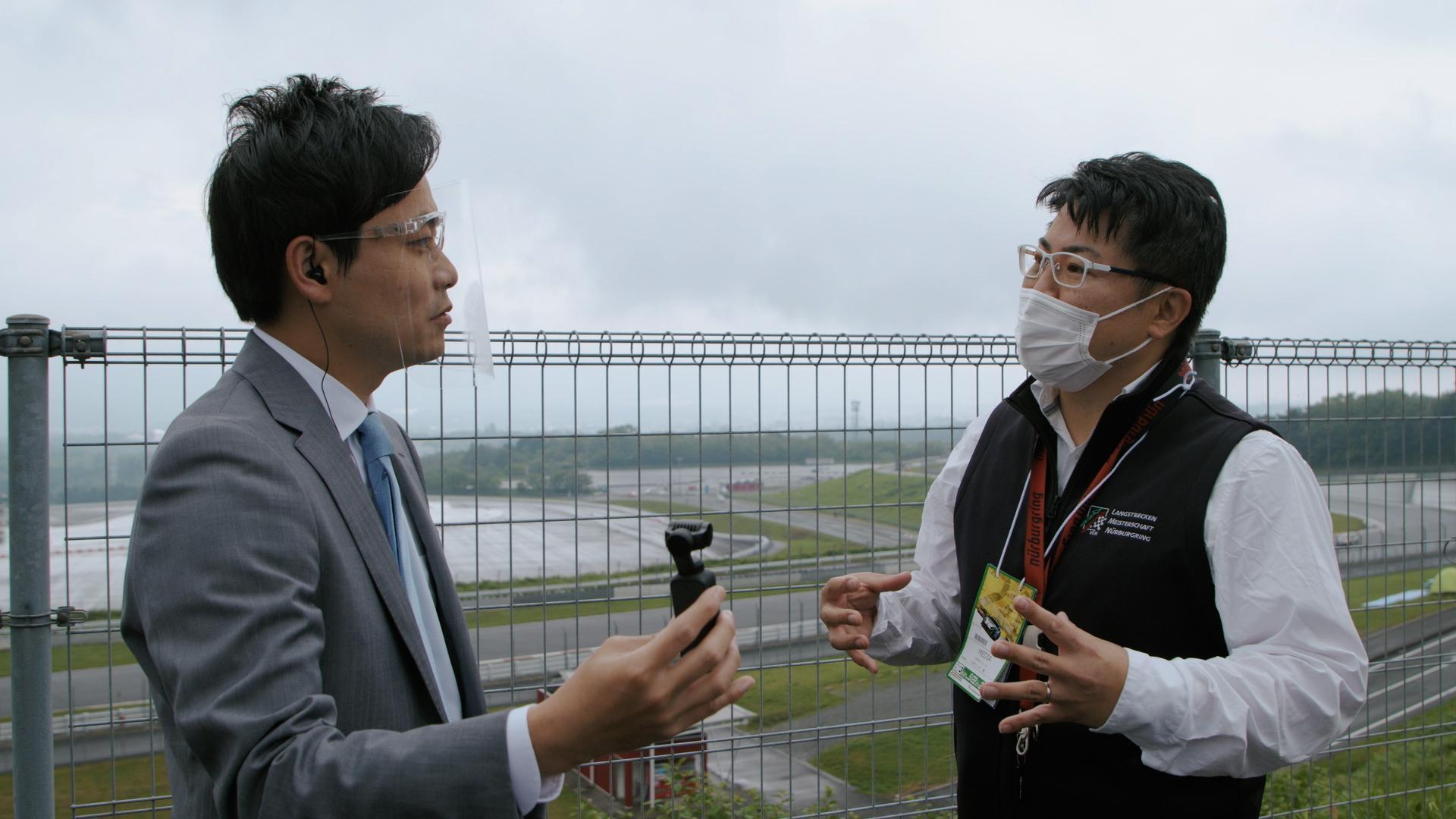
Automotive analyst Shinya Yamamoto, who was visiting the venue to cover the race, graciously agreed to an impromptu interview with Toyota Times.

With the race about to start, Toyota Times reporter Kyonosuke Morita spotted a solitary figure gazing out over the circuit where the heated battle was set to unfold. The man was automotive analyst Shinya Yamamoto, who has long watched the journeys of automakers as a journalist. Seizing a perfect opportunity, Morita rushed over to learn how the hydrogen-powered engine endeavor looked from his perspective.
Hydrogen-powered engine a culmination of past efforts

Upon first hearing the announcement, Yamamoto recalls being surprised and worried – “Huh? A hydrogen-powered engine?” Hydrogen engines had been developed by other companies before, but they didn’t seem to fit with motorsports. Yamamoto was skeptical: “Are you really doing this?”
Did that impression change by seeing the car in action for himself?
Morita:
And what do you think now?
Yamamoto:
I thought, “Wow, the car’s really running.” That might sound a bit strange, but it’s hard to believe that an unknown engine is reaching such speeds.
Yamamoto regards the hydrogen-powered engine as a culmination of Toyota’s past efforts in developing a broad range of technologies. For example, the company produced more rigid car bodies for the World Rally Championship (WRC), which it rejoined in 2017 and continues to compete in. In terms of handling hydrogen, Toyota has thoroughly addressed safety with the release of its first-generation Mirai fuel cell electric vehicle (FCEV) in 2014. On top of this, the GR Yaris engine that provides the base for the hydrogen-powered engine was designed with motorsports in mind, meaning it can withstand the high temperatures and pressures that are the biggest hurdle in the hydrogen-burned machine.
Yamamoto:
Using its various R&D experiences effectively is what enabled Toyota to throw the hydrogen-powered engine into motorsports in such a short time, and that underlying strength can be felt today.
Racing builds both cars and people
Shinya Yamamoto has been covering motorsports for many years. Was it true that racing made cars better?

Morita:
I take it that you have seen many other cars improve and become stronger through endurance races?
Yamamoto:
Along with cars, it also makes people stronger at the same time. To make a car run fast, safe, and reliable for 24 hours, you really need to cram everything into those 24 hours. In that sense, it’s a human drama.
When asked how he felt about the decision to suddenly cast a hydrogen-powered engine into this endurance arena, Yamamoto gave the example of hybrid technology.
Yamamoto:
When Toyota threw hybrids into the motorsport ring, that was also a 24-hour race. It was at the Tokachi 24 Hours in Hokkaido in the early 2000s (*2006 to be precise), where Toyota entered the GS (Lexus GS450h).
Back then as well, people questioned the decision – “Why put a hybrid in the race?” What at the time seemed to some like a joke eventually led to victory at Le Mans, didn’t it?
Toyota’s hybrid technology now boasts a commanding presence in the World Endurance Championship (WEC) and has claimed overall victory at the 24 Hours of Le Mans, one of the races that makes up motorsport’s “Triple Crown”. Just like the hydrogen-powered engine, this technology began with an “unprecedented challenge”.
“A catalyst that unleashed our dreams”
Of course, the carbon-neutral aspect of this challenge is also important, says Yamamoto. With the world striving towards the common goal of carbon neutrality by 2050, motorsports cannot stand alone as the exception.
Yamamoto:
At that point (in the carbon-neutral era), we want to be able to honestly say, “Don’t worry about motorsports, these are hydrogen-powered engines. They only emit water vapor”.
Yamamoto believes the hydrogen-powered engine holds great possibilities, and not just for motorsports. He sees its impact as having the potential to “solve all of the automotive industry’s problems”. This is because it can fully utilize the internal combustion engine technology that the industry has been refining for more than a century.
Morita:
So what we’ll witness today is a seed filled with grand possibilities?
Yamamoto:
That’s right. It’s not a dream engine, but it’s a catalyst that unleashed our dreams.
“I’m sure the dream engine will come further down the road,” says Yamamoto. Toyota’s current efforts are significant because they open the door to that future. That’s why he describes the hydrogen-powered engine as “a catalyst that unleashed our dreams”.
Morita:
You must be pretty excited about today?
Yamamoto:
Indeed. I won’t be able to sleep in these 24 hours. You never know what might happen.

